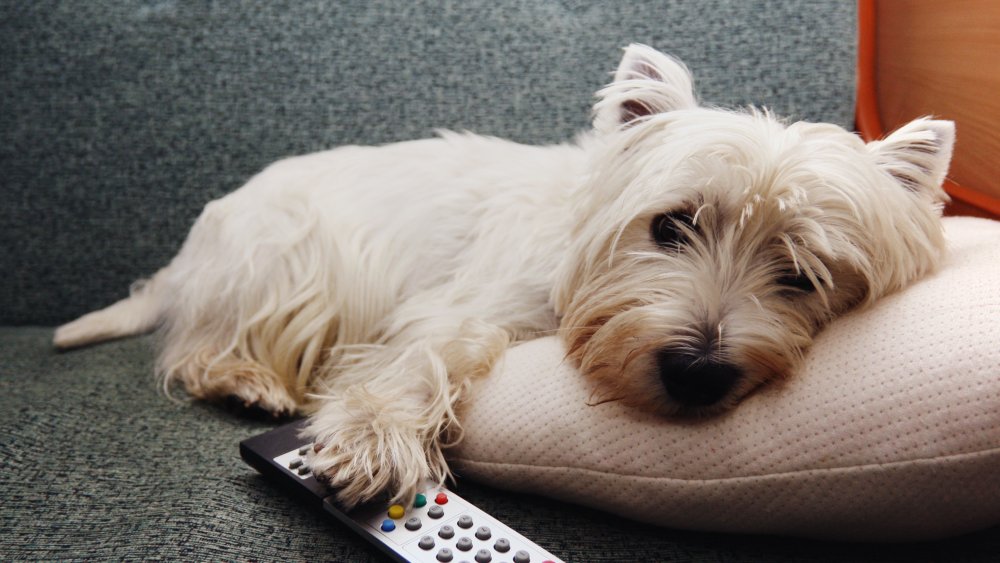Here's What Your Dog Really Sees On The TV
If you've ever left the TV running and have dogs, you might have noticed they sometimes stare raptly at the screen. Why is it that dogs seem to really love watching TV?
When dogs see a TV screen, they process the images at a different rate than human eyes, says The Dodo. Older television sets have a slower frame rate than newer models so when dogs look at TVs now, they think they're seeing the actual world. Dogs perceive images at around 70 frames per second compared to humans who do so at 16 to 20 frames per second, writes Mental Floss. When dogs look at an older TV they see blurred images, somewhat like a flip book, and they then tend to tune those scenes out. Newer HD televisions with higher frame rates would appear more realistic to a dog. And when dogs see pictures of things they love, say other canines or animals onscreen, they're more likely to react to it, according to The Dodo. That's why you see videos of dogs barking at TV screens.
Dogs also see fewer colors than humans. When they focus on a TV screen, they're really only processing yellow and blue, per National Geographic. So while they are smart enough to recognize onscreen animals — even ones they've never seen before — audio is more likely to hold their interest.
Doggie TV exists
Some dog experts say leaving the TV on is actually good for your dog. Health explains pets with separation anxiety can respond well to having the TV or a radio on when you leave. This gives them a feeling of safety when their humans aren't around. To do this, it's best to figure out first which images or sounds your dog responds to. The goal is to get your dog comfortable enough with the images they see.
There's even a channel designed specifically for dogs, according to National Geographic. DogTV features a higher number of frames per second and colored to accommodate dogs' limited color vision. The channel shows dogs chilling or dogs surfing. DogTV even has programs that can help a dog acclimate to a home, so some show things like dogs responding to doorbells.
Lastly, how much your dog likes watching TV also depends on their breed and personality. If a dog is not overly excitable, they might not react to the TV. Larger dogs also depend more on smell to stimulate them and, since Smell-o-vision hasn't made it to market yet, might not give the tube a second glance.
Regardless, don't be alarmed if your dog pays more attention to the TV than you. They're not being lazy, they simply believe they're looking out a window. And while there's a lot of things we get wrong about dogs, we can take comfort knowing they'll join us for our favorite past time: binge-watching shows.

